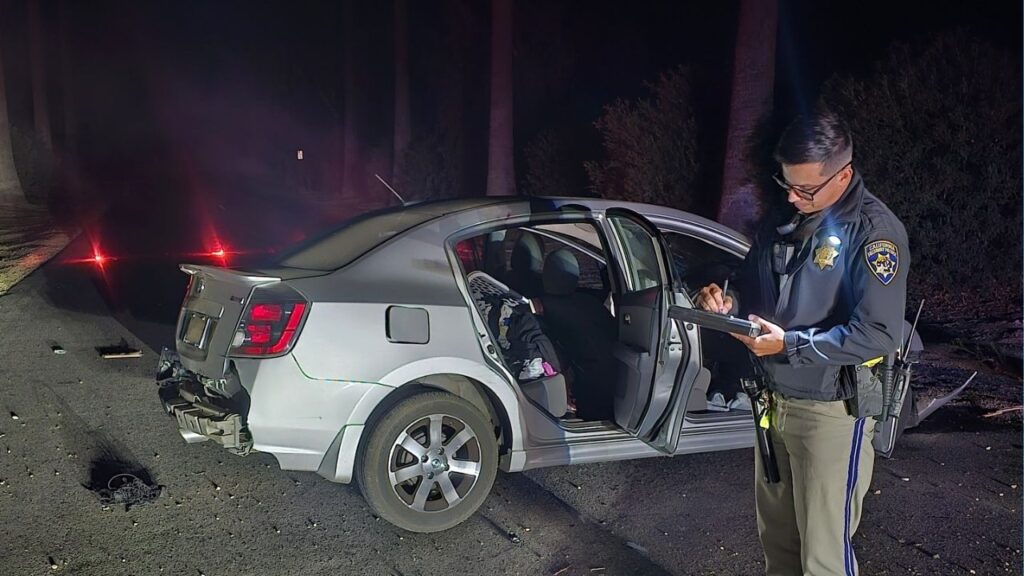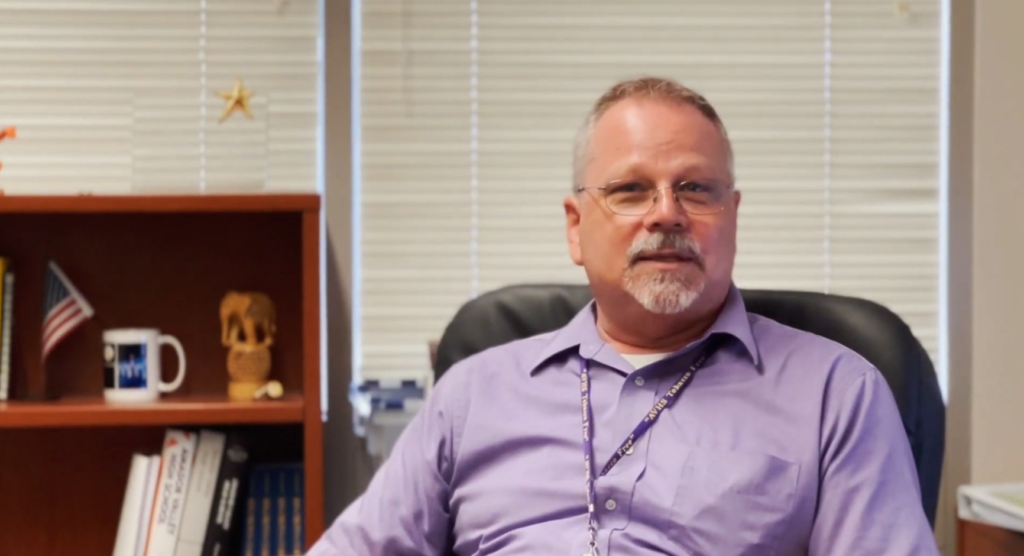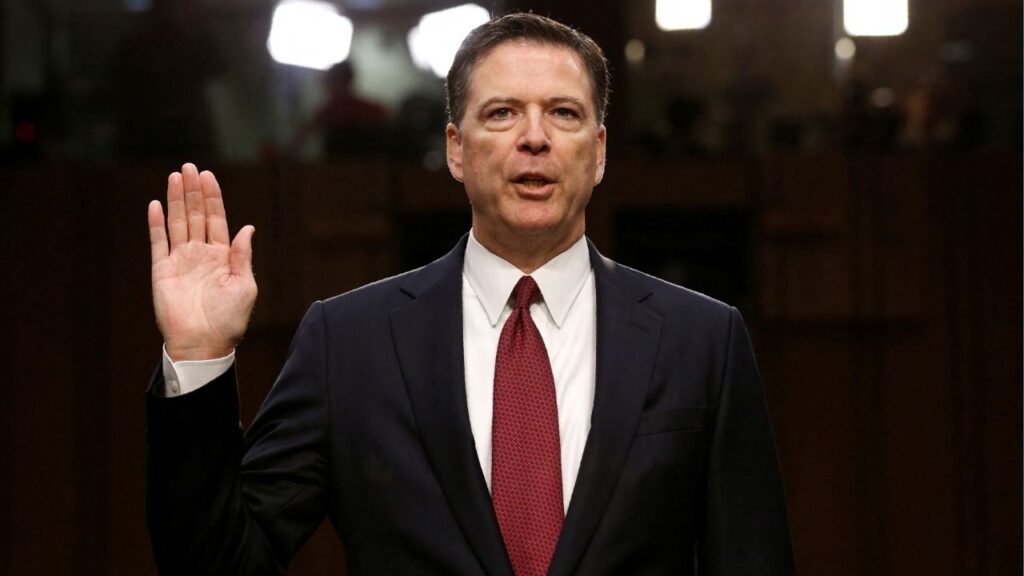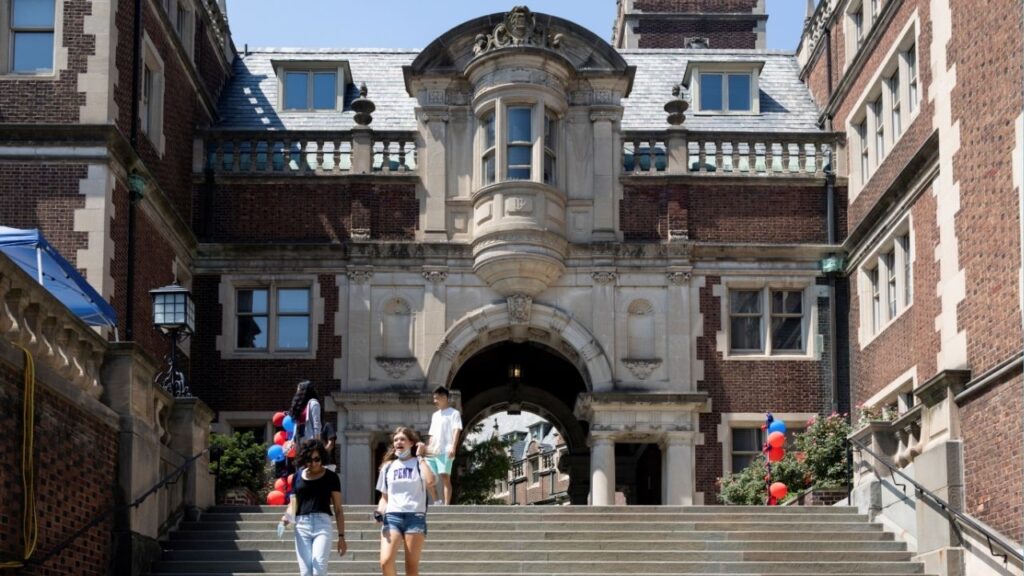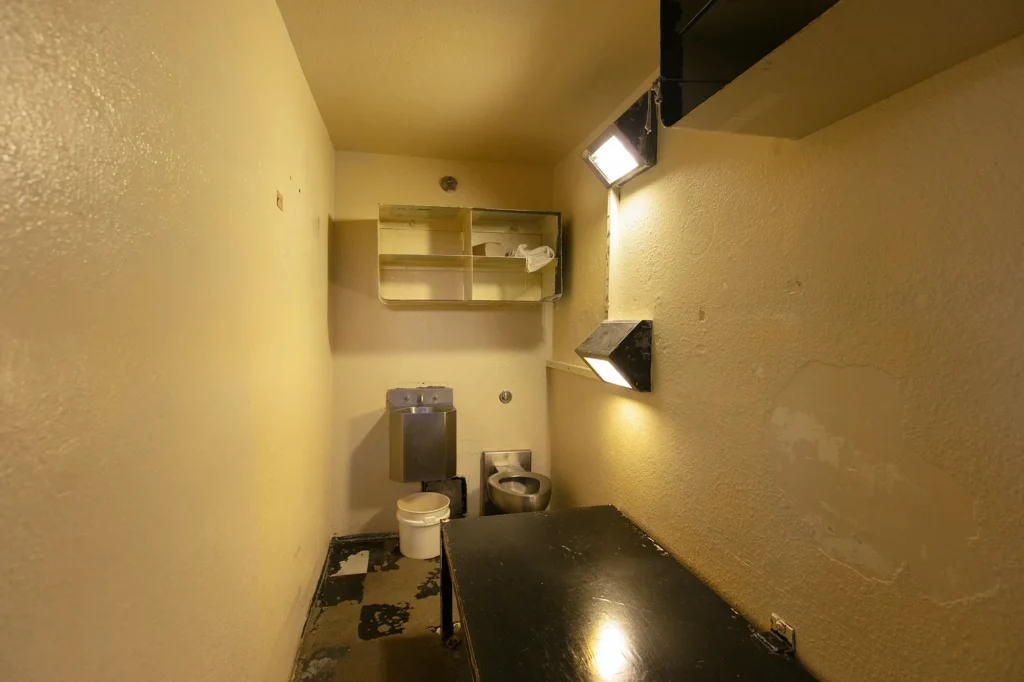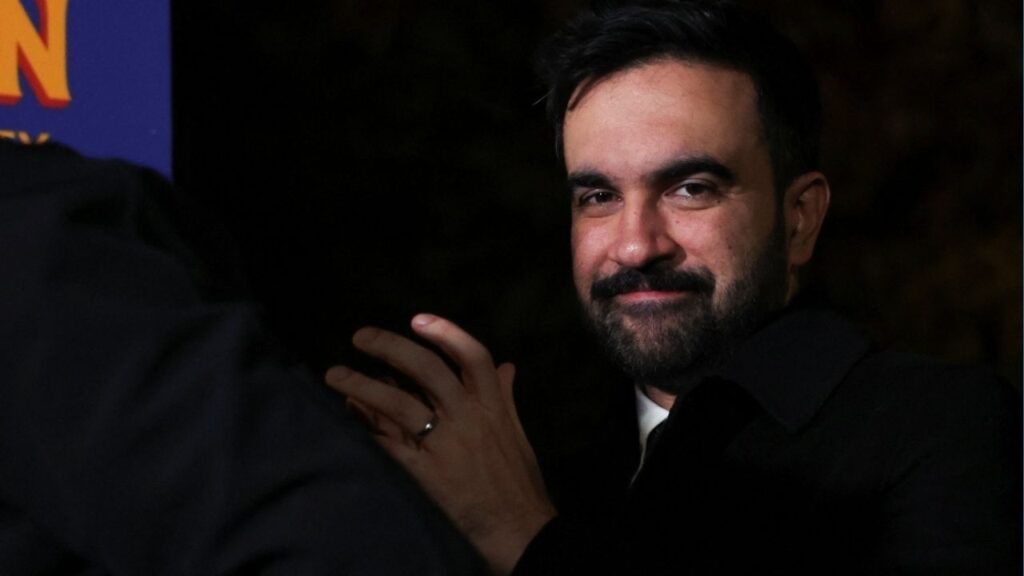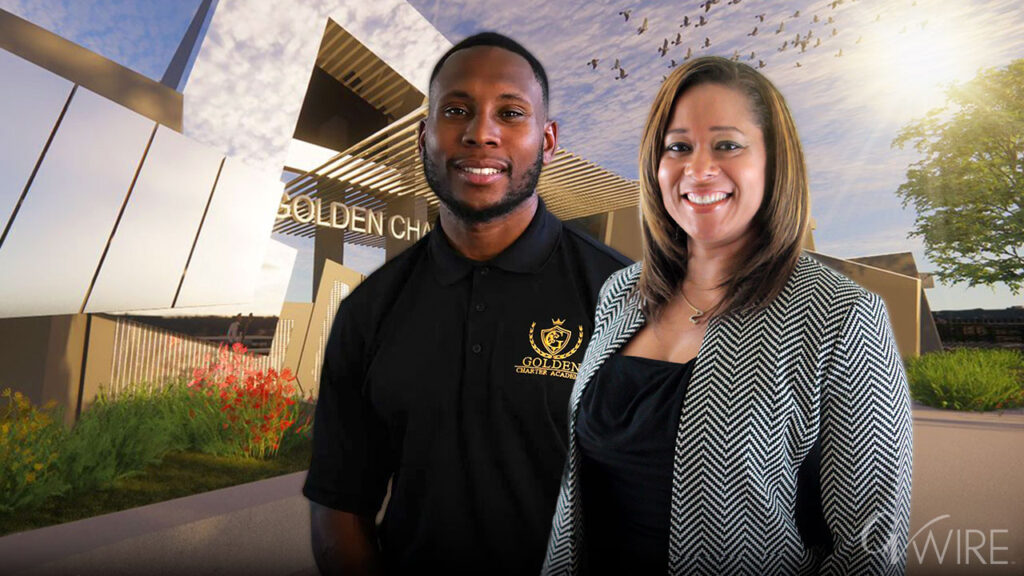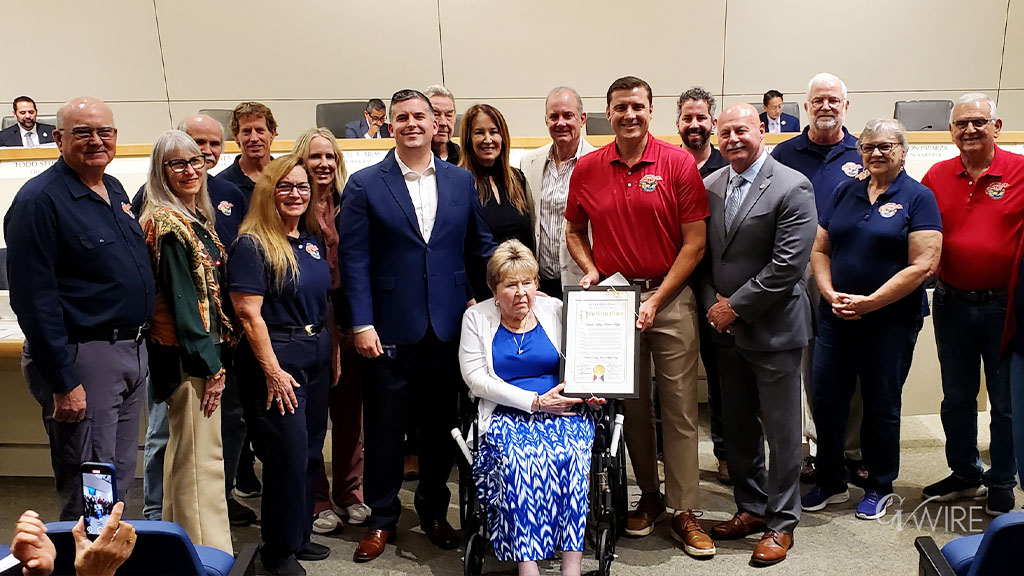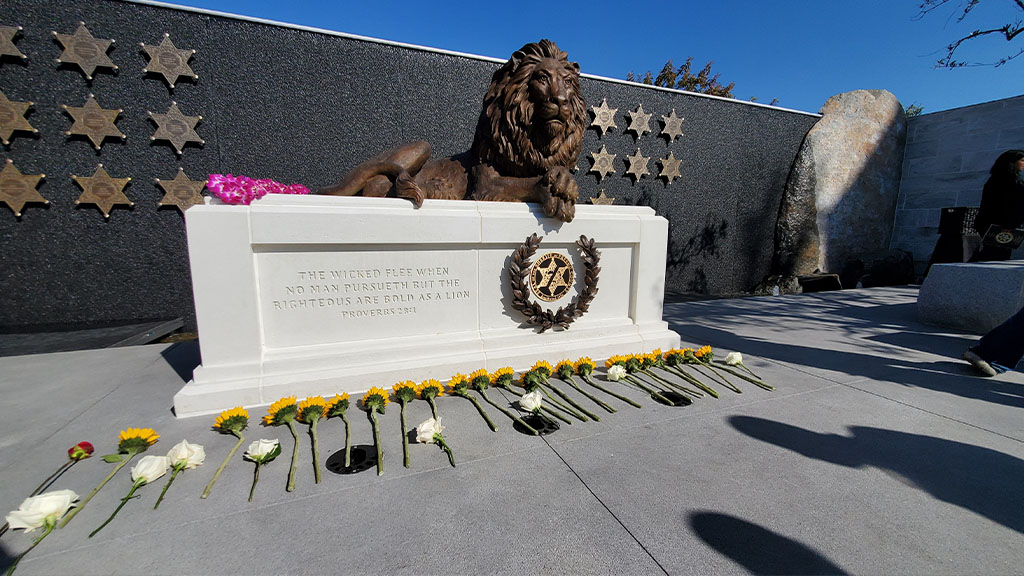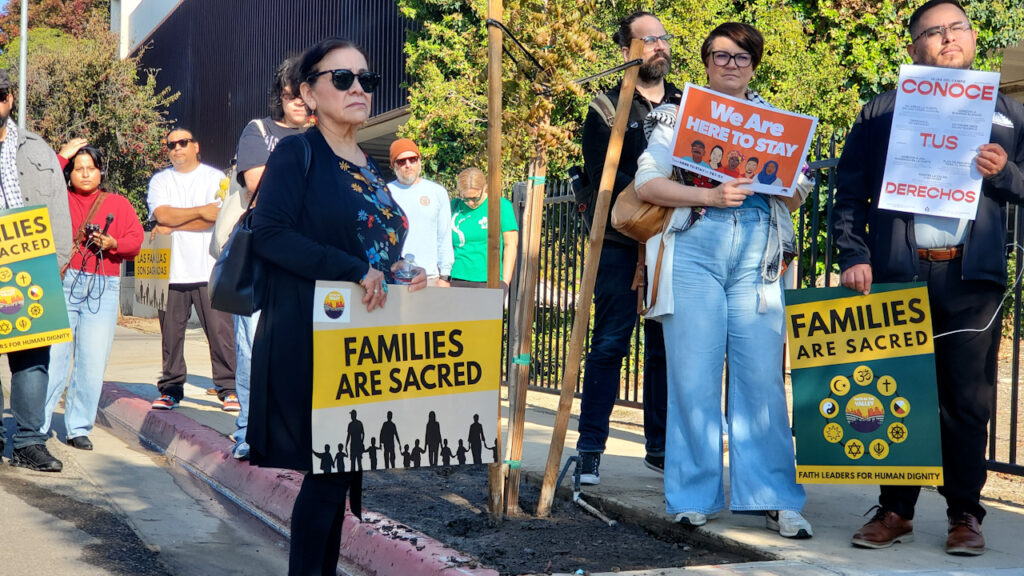Share
As California’s governor delivered his annual address — this time from Dodger Stadium — the CalMatters reporting team offered the following corrections, clarifications and context.
Thank you, Madame Lt. Governor, for your kind introduction.
And good evening to those joining us virtually tonight – Speaker Rendon, Pro Tem Atkins, members of the California Legislature, and to all of the elected, and state officials.
And to my amazing wife Jennifer, the First Partner of California.
Thank you all for being here in the most 2021 way possible, remotely.
Tonight, we mark an unprecedented moment in California history.
To reflect on where we’ve been this past year, let’s consider where we are.
I’m speaking to you from Dodger Stadium, transformed from the home of last year’s World Series champions into a centerpiece of America’s mass vaccination campaign.
One political upside of a remote State of the State speech: Dodger Stadium — temple of America’s favorite pastime, emblem of spring and renewal and now California’s most iconic vaccination site — is a tad more photogenic than the state Assembly chamber. — Ben Christopher
Instead of fans in stands, we see nurses in PPE, saving lives one injection at a time.
All because, one year ago a once-in-a-century pandemic arrived on our shores.
COVID was no one’s fault – but it quickly became everyone’s burden.
Forcing hard-working Californians into impossible choices – go to work and risk infection, or stay home and lose your job.
A recent UC San Francisco study found that deaths among California food and agricultural workers increased 39% during the pandemic compared to prior years. Still, ag and other industries have pushed back against California’s new COVID-19 workplace safety standards. — Jackie Botts
It magnified daily worries about feeding your kids, paying rent, and keeping loved ones safe.
An estimated 600,000 to 2.1 million people in California are at risk of eviction. — Nigel Duara
It made the unthinkable, commonplace.
COVID patients cared for by doctors, nurses, and paramedics who, despite the chaos and risks to themselves, paused to hold the hands of strangers in their final moments.
Too many forever goodbyes over FaceTime.
54,395 Californians we now mourn with broken hearts.
Nearly half of those deaths have been Latinos, who have been disproportionately affected by COVID-19. The same is true among child cases, with Latino kids accounting for two-thirds of the cases and six of the 14 child deaths in the state. — Elizabeth Aguilera
That’s almost the same number of empty seats behind me, marking a silent tribute to loved ones who live forever in our memories.
54,395 Californians who will never be forgotten by family and friends – nor by the health care workers who bore witness to unimaginable tragedy.
But not every COVID hero wears scrubs.
From the grocery workers to custodians who get a fraction of the gratitude they deserve, to the parents who’ve juggled and struggled – moms especially – but kept charging ahead.
Union workers and suburban mothers are critical constituencies Newsom would want to keep on his side in a recall election. — Laurel Rosenhall
Your quiet bravery has created light in the darkest of times.
As Dr. Martin Luther King, Jr. said, “Only when it’s dark enough, can you see the stars.”
So tonight, under the lights of this stadium – even as we grieve – let’s allow ourselves to dream of brighter days ahead. Because we won’t be defined by this moment – we’ll be defined by what we do because of it.
On Sunday, the political campaign to oust Newsom announced it has gathered more than enough signatures to put a recall election on the ballot later this year. Assuming that’s right, Newsom had better hope he isn’t defined by this moment. — Ben Christopher
After all, we are California.
We don’t wait for someone else to show us the way forward. We go first, and we go boldly.
We led – on gay rights, gun safety, and criminal justice reform.
Past tense, apparently. This is the only mention of criminal justice reform — in one of the only states that doesn’t decertify police officers for misconduct and which still has some of the harshest sentencing laws in the country. — Robert Lewis
Many criminal justice advocates argue that the state completely botched the COVID-19 outbreaks, and fault Gov. Newsom for not releasing more people during the outbreaks. — Byrhonda Lyons
And now, we lead on combating COVID.
From the earliest days of the pandemic, California trusted in science and data.
We met the moment.
Mark your Newsom Lingo Bingo cards! — Ben Christopher
Last January, we welcomed Americans home, accepting repatriation flights from China.
And one year ago today, we brought to shore the Grand Princess, which was stranded off the coast of California, further opening our eyes to the seriousness of this disease.
CalMatters keeps a handy tick-tock of every key date of the pandemic’s stranglehold on California.
We were the first state to issue a stay-at-home order, which helped us avoid early spikes in cases.
Newsom earned major plaudits for his early, aggressive handling of the pandemic. That was before pandemic fatigue set in, mask-wearing became politicized, rafts of businesses started going under and Newsom was caught dining at one of the state’s fanciest restaurants contrary to the spirit of his own public health rules. Facing a recall, the governor wants us to remember when. — Ben Christopher
The top minds from our nation’s leading research institutions and life science companies immediately jumped into the development of groundbreaking treatments and vaccines.
While others competed to buy personal protective equipment at exorbitant prices, we quickly built our own pipeline, supplying critical gear to millions and millions of essential workers.
Early in the pandemic, California, like other states, scrambled to secure protective gear and other medical supplies. In a rush to acquire face masks, the state wired half a billion dollars to a three-day-old company, only to have the deal fall apart hours later. – Ana B. Ibarra
We sent ventilators and doctors to New York as well as other states that so desperately needed them.
We developed the most comprehensive COVID testing program in the country — including a first-in-the-nation state-run testing lab.
California opened a $25 million lab in October, after months of not being able to meet the demand for testing and growing public frustration over long waits for results. The lab helped boost the state’s testing capacity, but it didn’t come without issues — last month the state reported it had found “significant deficiencies” during a routine inspection. – Ana B. Ibarra
We enlisted additional health care workers to expand capacity and we readied our ICUs. Our advance planning and curve flattening meant our hospitals were ready for surges.
During summer and winter surges, hospitals were so inundated and short on staff that some had to send patients to facilities outside their county. In December, ICU capacity dipped below 15% in most parts of California, which prompted a regional stay-at-home order. — Ana B. Ibarra
All of which is why California’s death rate has remained one of the lowest per capita in the nation: 134 deaths per 100,000, compared to 158 nationally, 153 in Texas and 247 in New York.
Now, finally, vaccines are here. We were the first to launch these mass-vaccination sites in partnership with FEMA, now a model for other states all across the country.
Two mass vaccination sites co-run by the state and FEMA opened in Oakland and Los Angeles. Newsom promised a third to Fresno, but that is still pending. — Ana B. Ibarra
Vaccinations are also happening inside the state’s prisons. Around 40% of incarcerated Californians have received at least one dose of the vaccine. COVID-positive cases are the lowest they’ve been since early last year when the pandemic began. — Byrhonda Lyons
Today, we have the most robust vaccination program in America. Think about this: California now ranks sixth in the world for vaccine distribution, ahead of countries, not states, ahead of countries like Israel, Russia, Germany and France.
To date, California has administered 10.9 million vaccines, more than any other state. But it falls behind 37 states, including New York, Florida and Illinois in vaccines administered per capita. — Ana B. Ibarra






